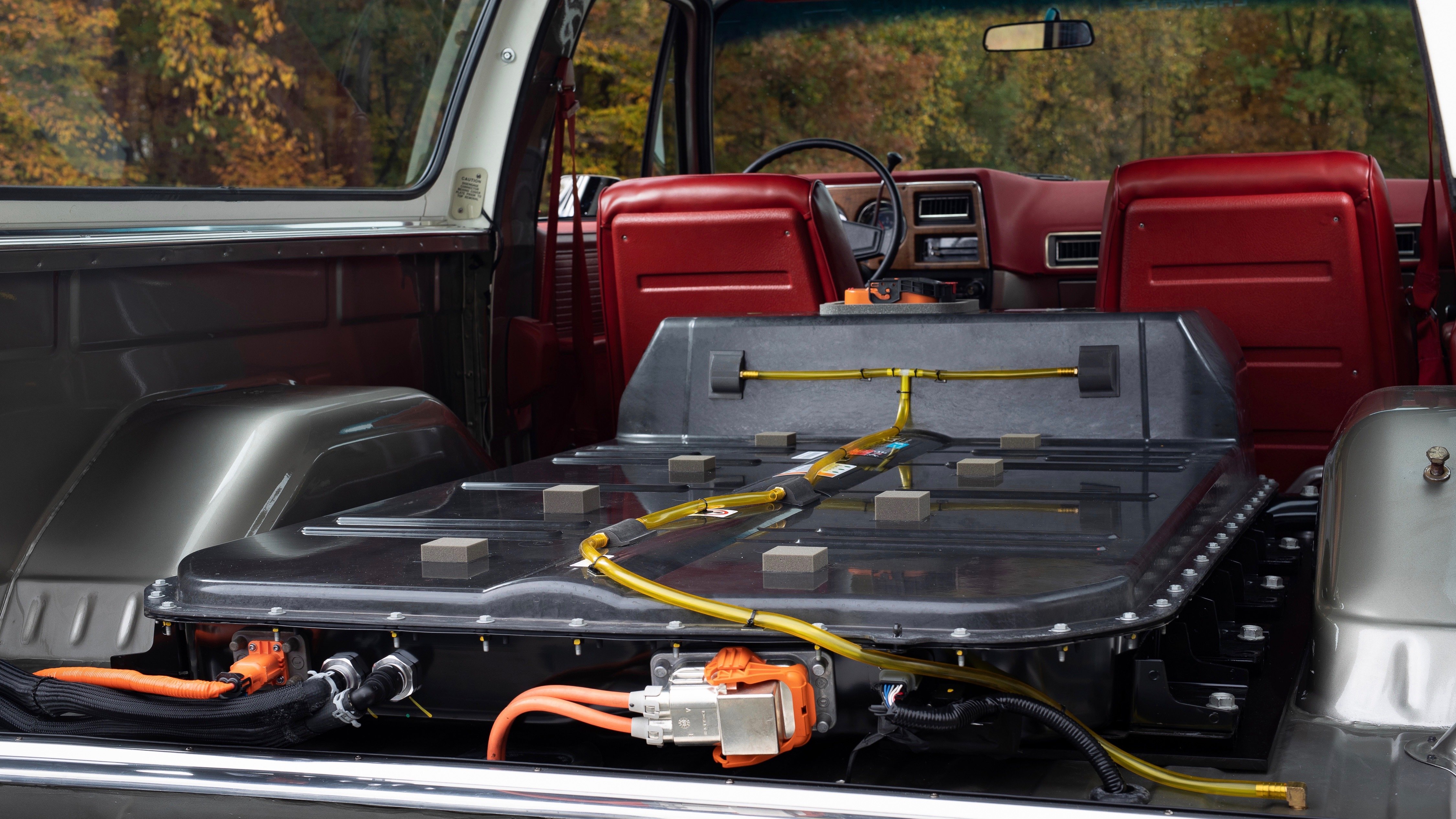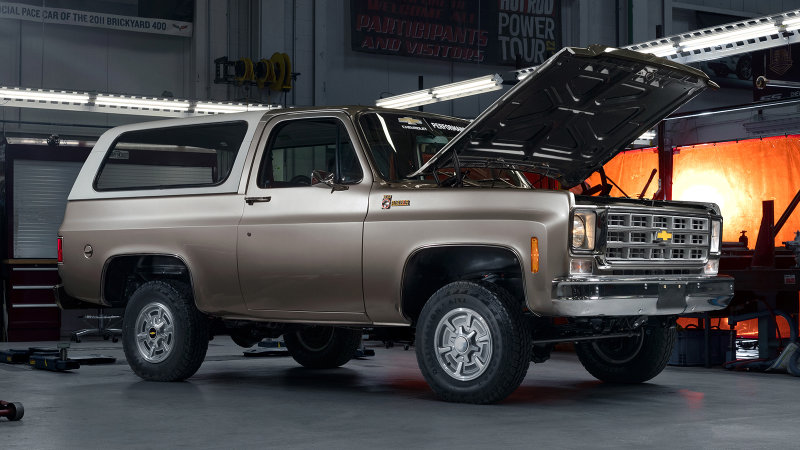The unveiling of not only a beautiful 1977 electrically converted Chevy Blazer, but a glimpse of the Connect and Cruise eCrate engine production and battery pack left us with multiple questions about each project. So we got in touch with GM, and we were able to speak to Jeff Trush, the Specialty Show Vehicles division program manager. He revealed some cool facts about the Blazer and gave us some more details about the conversion package.
One of our big questions was exactly what kind of transmission was used, in part to find out if there will be a range of transmissions available to hook up. Trush told us the Blazer uses a 4L75E four-speed automatic, which will be the transmission that comes with the kit. It’s a fairly common Chevy transmission, and the electric motor doesn’t require a ton of gear ratios. Interestingly, it’s a traditional automatic torque converter, with the torque converter still in place, and the engine is attached with an adapter for the transmission’s flex plate. Trush said there are currently no plans for a manual transmission version. However, we suspect creative builders could probably hook up a manual transmission.
It is certainly possible that plans can change. Trush said GM is still figuring out how many accessory parts and what won’t be included with the final kit. That includes whether a selection of engine mounts will be added, what kind of gauge setup, power steering and brake booster components, and other similar opportunities and goals. Either way, the kit gives you everything a Bolt EV gets, from convenience to safety features. One of the surprising additions is the air conditioning, which is integrated with the same compressor in the cooling system of the battery. All controllers for battery maintenance, safe charging and even impact protection are all included.

We were also curious about the final battery design, and Trush confirmed that the pack uses the same size and shape as a battery pack found in the base of the Chevy Bolt EV. He also said this was one of the reasons why the two electric vehicles GM converted, last year’s K5 and E-10 pickup, were chosen – they had plenty of room for the battery pack and a suspension that could handle it. the extra weight. The battery pack weighs approximately 1,000 pounds. And even in the K5, the Trush team added auxiliary springs. He did say the truck didn’t actually crouch when they first got in, but they still added the helpers just in case. He noted that it will be important to properly anchor the battery, and in the Blazer, it is bolted through the body to the frame at 10 different points.
As for the Blazer itself, Trush said the team managed to convert it in just 30 days. They used a Blazer that GM already had in its fleet of old vehicles, but gave it some finishing touches, like the marked “EV” in the center of “Chevrolet” on the tailgate. For the battery, the rear seat had to be removed and takes up a fair amount of cargo space. But Trush said the team plans to build a grenade over it and add some cargo loading to regain some utility. They are also going to make other minor upgrades to it, like a new 4.10: 1 rear axle ratio instead of the current 3.08: 1. This should make it off the line faster and give it an even better crawl ratio. Upgrades like this one will also be fairly easy as the axles and transfer case are the same as any other old Blazer.
We also asked about the status of the high-power modular motors featured on last year’s E-10, as well as the possible pricing of this electrical kit. Trush unfortunately had no answers. He did say GM is still doing some research and is considering pricing for the kit. And in the press release for the Blazer, GM says it wants to expand its electric conversion offering. All in all, the future of cool classic electric cars looks exciting.
Related video:
